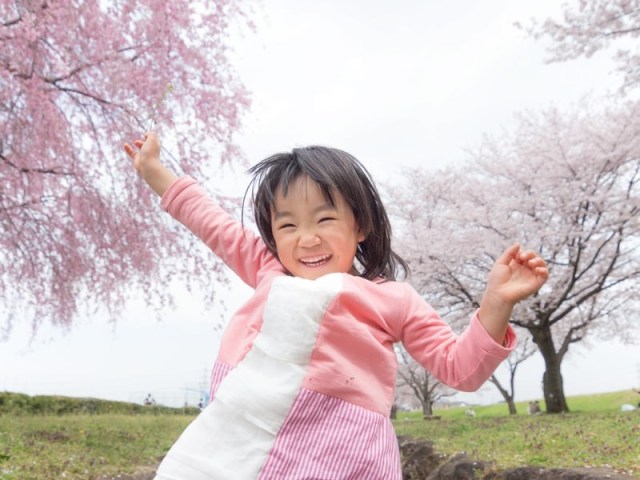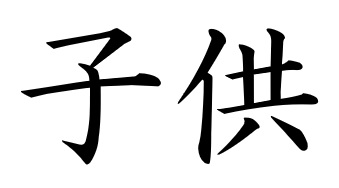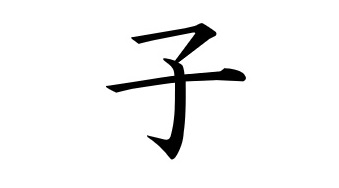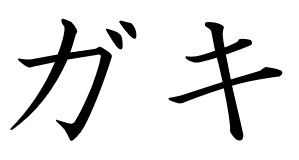
Let’s celebrate Japan’s Children’s Day by learning how to talk children in Japanese.
In Japan, May 5 is a holiday called Children’s Day. In Japanese, it’s “Kodomo no Hi,” and the translation is pretty straightforward: kodomo means “children,” no is equivalent to “’s,” and hi is “day.”
But kodomo is just one of many ways to say “children” in Japanese, so with today being Children’s Day, let’s take a look at some of them, what makes them different, and when each is used.
1. Kodomo

“Hey, didn’t we already cover this? You said kodomo means ‘children,’ right?” That’s true, I did, but in a convenient twist, it also means “child.” That’s because Japanese uses the same words for both the singular and plural forms of a noun.
Kodomo is the most common, broadly used word for “children” or “kids.” You can use it in just about any context or conversation and it won’t sound particularly weird or out of place.
2. Ko

Ko is the even shorter version of “child,” written with just the first of the two kanji characters used for kodomo. While the meaning of ko and kodomo are the same, there’s a difference to be aware of in how they’re used, which is that ko is usually used to talk about a specific child or children, not children in abstract or collective terms.
So if you want to say “That kid loves ramen,” you could use either ko or kodomo (“Ano ko/kodomo wa ramen ga suki desu”). But if you wanted to say “Kids [in general] love ramen,” kodomo would sound natural, but just ko wouldn’t. So while kodomo is the longer word, it tends to be more useful than ko.
3. Chibikko

Chibi, meaning “tiny,” is one of those words that’s seeped into the vocabulary of overseas Japanophiles in recent years, with overseas anime fans using it to describe scaled-down, cuteness-up versions of characters. The same sentiment applies to combining chibi with ko, making chibikko a word for when you’re not just talking about kids, but specifically “cute little kids,” sort of like “little tykes” in English.
As a side note, chibisuke is a variant of chibikko. The nuance of “cute little kid” is the same, but -suke is a traditional ending for male names in Japan, so chibisuke is used for talking about boys, akin to “cute little guy.”
4. Jidou

In contrast to the casual tone of chibikko, jidou is a very proper-sounding term. It’s the word used to talk about things such as “children’s education” (jidou kyouiku), “children’s welfare” (jidou fukushi), and “child psychology” (jidou shinrigaku), and other societal senses. On the other hand, it’d sound weirdly stuffy to use jidou in our above example sentence about a kid eating ramen, or to use it when talking about a group of cute kids playing in the park.
5. Gaki

And jumping back to casual vocabulary, but with a very different tone from chibikko, we’ve got gaki, Japanese’s version of “brat.”
Originally, gaki is written with the kanji 餓鬼, which translate literally as “hungry demon,” which should give you an idea of the dim view of the kids in question in the eyes of the person saying/writing it. Nowadays, in written form you’re more likely to see it rendered in phonetic katakana script. Katakana is usually used for loanwords, but its angular lines make it a good fit for gaki’s harsh sound. Speaking of harshness, when someone has really had it up to here with those brats, you might hear them step their choice of words up to kuso gaki, or “shit brats” or “shitty little kids.”
That said, gaki doesn’t always carry a sense of genuine dislike for the kids being talked about. Some people use it as a gruff term of endearment, sort of like “rugrat” in English. Even then though, it’s probably a good idea to use it sparingly, always with a smile, and never with the kuso modifier stuck on the front of it.
Top image: Pakutaso
Insert images: SoraNews24
● Want to hear about SoraNews24’s latest articles as soon as they’re published? Follow us on Facebook and Twitter!

No hay comentarios:
Publicar un comentario